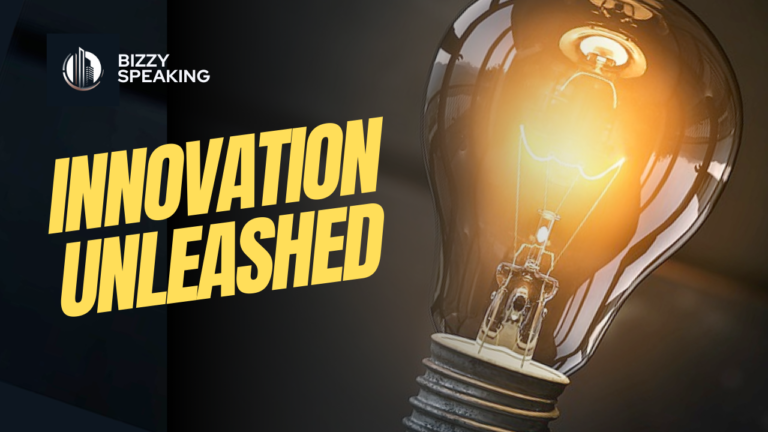How to Grow Your Business with Marketing Automation Platforms
Business owners and entrepreneurs don’t need another glossy pitch — they need reliable, practical systems that turn strangers into customers and customers into loyal advocates. Marketing automation platforms can do exactly that when implemented thoughtfully. In this article, we’ll explore how to build growth engines using core capabilities like email automation, funnels, webinars, segmentation, and analytics, giving you concrete steps, metrics, and workflow patterns you can apply immediately.
Why marketing automation matters for modern growth
- Consistent, scalable outreach: Manual follow-ups and one-off campaigns don’t scale. Automation keeps you present across channels without burning your team out.
- Higher conversion through relevance: Timely, behavior-based messages outperform batch-and-blast emails. Personalization increases response, retention, and lifetime value.
- Better visibility: Unified analytics across email, landing pages, and funnels help you see which steps drive revenue so you can double down or fix what’s broken.
- Lower cost per acquisition: Orchestrated journeys reduce wasted ad spend and improve payback periods.
Growth tools, such as GetResponse, combine these functions into one platform, so you spend less time stitching tools together and more time improving offers, creative, and customer experience.
Core capabilities that drive growth
Email marketing and automation
- What it’s for: Nurturing leads, onboarding new customers, lifecycle messaging, re-engagement, and promotional campaigns.
- How it works in practice:
- Journey builder: Create visual workflows triggered by signups, clicks, purchases, tags, or inactivity.
- Personalization: Use merge fields, dynamic content blocks, and segments to tailor messages by interest, behavior, or lifecycle stage.
- Testing: A/B test subject lines, content, send times, and offers; iterate based on open rate, CTR, and conversion data.
- Action template:
- Welcome series (3–5 emails): Deliver value, set expectations, and present a low-friction next step.
- Education sequence: Short lessons, case examples, and FAQs; invite replies to gather qualitative data.
- Conversion nudges: Time-bound offers or demos tied to engagement signals (e.g., visited pricing page).
- Re-engagement: Identify cold subscribers; send a preference update or value-packed roundup, then either re-opt-in or sunset.
Landing pages and conversion funnels
- What it’s for: Turning traffic into leads and sales with focused pages and structured follow-ups.
- How it works in practice:
- Prebuilt funnel blueprints: Lead magnet, webinar, sales funnels connect ads → landing page → form → email sequence → sales page → payment.
- On-page conversion tools: Countdown timers, social proof blocks, exit-intent pop-ups, and mobile-responsive layouts.
- SEO and speed: Basic metadata controls and fast hosting to capture organic and paid traffic efficiently.
- Action template:
- Lead magnet funnel:
- Traffic source selection (search/social/partners).
- Single-purpose landing page with one CTA.
- Thank-you page with an immediate micro-offer.
- 5-part nurture sequence tailored to the magnet’s topic.
- Segmentation by link clicks → targeted follow-up.
- Sales page optimization: Clear value proposition, objection handling, guarantee, and prominent CTA; test layout variations.
- Lead magnet funnel:
Webinars and live events
- What it’s for: Building authority, accelerating trust, and closing warm prospects.
- How it works in practice:
- Native webinar hosting: Registration pages, reminder flows, live chat/Q&A, polls, and follow-up sequences in one system.
- Post-event automation: Different paths for attendees vs. no-shows; send replay, highlights, and targeted offers based on engagement.
- Action template:
- Cadence: Announce T–7, T–3, T–1, and T–2h reminders; add calendar invites.
- In-session: Use polls to segment interest; collect questions to inform follow-ups.
- After: 24h replay to all; personalized CTA based on poll answers and watch time.
E-commerce and transactional messaging
- What it’s for: Recovering revenue and nurturing repeat purchases.
- How it works in practice:
- Platform integrations: Sync products, customers, and events (browse, cart, purchase) with Shopify, WooCommerce, Stripe, or PayPal.
- Triggered flows: Abandoned cart emails, replenishment reminders, post-purchase education, and review requests.
- Action template:
- Abandoned cart (3-touch):
- Email 1: Reminder within 1–2 hours.
- Email 2: Objection handling with testimonials.
- Email 3: Gentle time-bound incentive (if margin allows).
- Post-purchase: Setup-guide email, cross-sell based on category, and VIP program invite.
- Abandoned cart (3-touch):
Segmentation, personalization, and consent management
- What it’s for: Sending the right message to the right person at the right time — and doing it ethically.
- How it works in practice:
- Audience structure: Tags, custom fields, scoring, and lifecycle states (new lead, engaged, customer, at-risk).
- Preference centers: Let subscribers choose topics, frequency, and channel; support double opt-in when appropriate.
- Regional compliance: Configure consent and data retention to meet privacy expectations.
- Action template:
- Segment taxonomy: Interest, intent, lifecycle, engagement level, and product category.
- Frequency management: Slow the cadence for low-engagement segments; increase relevance with dynamic content rather than more sends.
Analytics and optimization
- What it’s for: Constantly improving conversion and ROI.
- How it works in practice:
- Funnel analytics: Attribute revenue to specific steps (email, page, webinar, checkout).
- Behavior insights: Identify drop-offs, low-performing content blocks, and timing effects.
- Test-and-learn: Run iterative experiments and capture learnings in playbooks.
- Action template:
- North-star metrics: CAC payback, conversion rate by step, LTV/CAC ratio, email revenue per subscriber.
- Weekly ritual: Review segment performance, update one test per funnel, retire underperformers, and roll wins into SOPs.
A practical 30–60–90 day implementation plan
Days 1–30: Foundations and quick wins
- Define one core goal: Lead generation, sales conversion, or churn reduction. Avoid diluting focus.
- Set data hygiene: Standardize tags, fields, naming conventions, and consent practices.
- Launch two funnels:
- A lead magnet funnel with a 5-part nurture.
- A welcome/onboarding series for new subscribers or customers.
- Measure baseline: Capture opt-in rate, email engagement, and first conversion metrics.
Days 31–60: Expand and personalize
- Add segmentation: Interest and lifecycle states; adjust content dynamically.
- Introduce a webinar: Use polls to discover buying triggers; tailor follow-ups.
- E-commerce triggers (if relevant): Abandoned cart, post-purchase education, and replenishment.
- Improve conversion assets: Test headlines, social proof, offer framing, and CTA placement.
Days 61–90: Optimize and scale
- Build playbooks: Document prompts, templates, subject lines, and SOPs so the team can replicate wins.
- Automate maintenance: Re-engagement for cold subscribers; quarterly list hygiene.
- Add a second growth loop: Referral incentives or partner co-marketing tied into your funnels.
- Executive review: Compare CAC payback and funnel lift; fund the highest-ROI next steps.
Common pitfalls and how to avoid them
- Tool-first thinking: Start with outcomes and customer journeys, then select features that serve them.
- Too many goals in one funnel: Keep each funnel single-purpose; track success cleanly.
- Neglecting data quality: Inconsistent tags and fields break personalization and reporting.
- Over-sending without relevance: Focus on dynamic content and interest-based segments to protect deliverability.
- No sunset policy: Remove hard-inactive contacts to keep costs and spam risk low.
KPIs and diagnostics to prove impact
- Acquisition: Landing page conversion rate, cost per lead, double opt-in completion.
- Engagement: Open rate, CTR, reply rate, and session time from emails.
- Conversion: Email-assisted conversions, funnel step-through rate, checkout completion.
- Revenue: Email revenue per subscriber, abandoned cart recovery rate, repeat purchase share.
- Efficiency: Time-to-launch for campaigns, percent automated vs. manual sends, deliverability rate.
Use simple dashboards to monitor these weekly; prioritize fixes where drop-offs are largest.
Light comparison: when all-in-one beats a stitched stack
- When it helps: Small teams that need speed, coherence, and fewer integration points; businesses leveraging webinars plus email plus funnels in one motion.
- When to supplement: If you need deep CRM sales automation or advanced e-commerce attribution, you may pair your automation platform with specialized tools. Keep platforms being used, like GetResponse, as the messaging and funnel engine and integrate the extras via native connectors or API.
Ethical, sustainable outreach
- Respect consent and preferences: Make opting out easy; honor frequency caps.
- Deliver value before pitching: Educational sequences, case studies, and how-tos build trust.
- Avoid dark patterns: Transparent offers and genuine deadlines preserve brand credibility.
- Measure fatigue: Watch unsubscribe and spam complaint rates; adjust cadence and content accordingly.
Putting it all together
If you approach marketing automation as a system — clear goals, clean data, focused funnels, and continuous optimization — platforms like GetResponse can materially improve lead quality, conversion rate, and lifetime value. Start small with one or two high-impact journeys, build segmentation and personalization as you learn, and let data steer your next iteration. The result is a reliable growth engine you can operate confidently.
*Please note that some links on this site may contain affiliate links to products or services. We may receive a small commission, at no extra cost to you, for purchases made through these links, which helps support this site.









